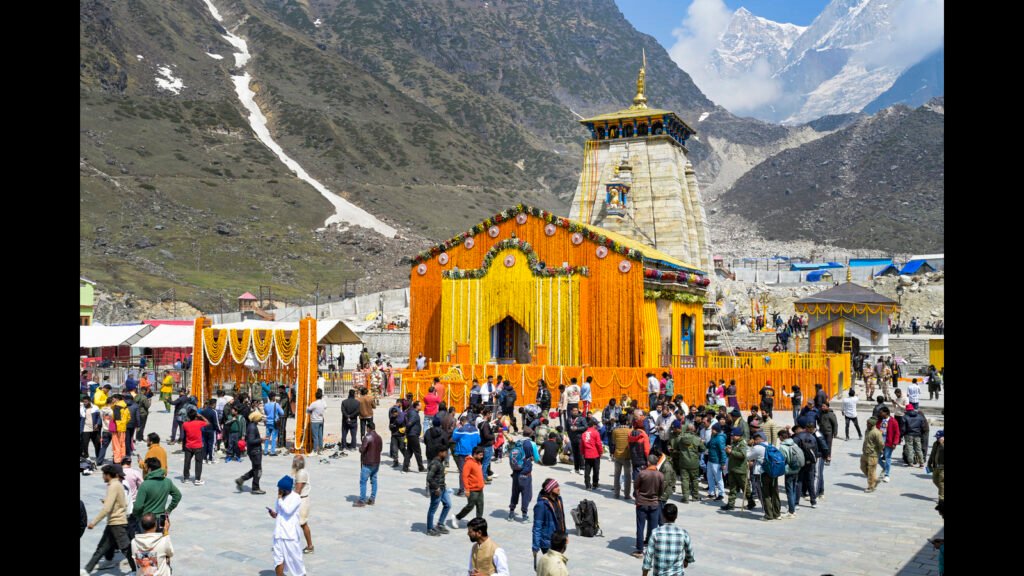
The kedarnath yatra is among the oldest and sacred pilgrimages in India. Its roots are traced to the time of adi shankaracharya, who is believed to have restored the shrine. For pilgrims, it used to be a spiritual journey marked by devotion and enduance rather than mere physical experts, something I experienced during my tenure as the superintendent of police in chamoli District in 1994.

However, this pilgrimage has undergone a drastic transformation in the last 10 years. Following the devastating 2013 floods and extended reconstruction efforts by the government, especially after Prime Minister Narendra Modi Visited the Shrine, The Yatra Has Sen an unprecedented Footfall. From a daily average of just 2,500 pilgrims in the early 1990s, the number no exceeds 30,000 per day. This brings forth logistical, ecological, and spiritual challenges.
The massive influx of pilgrims has placed enormous pressure on Kedarnath’s Fragile Himalayan Ecosystem and Carrying Capacity. Managing Such Vast Numbers has become Increasingly Difability, Especially SINCE The Subject is Deeeply Emotional and Religious, Making Regulatory Enforcement Sensitive. In more recent times, the yatra has morphed into a status symbol, driven by social media trends where the spiritual essence is often overshadowed by selfie culture and digital bragging rights.
After the 2013 disaster, the trekking path had to be extended from 14 km to 19 km due to terrain shifts, making the journey more Arduous. The Shared Pathway for Horses and Pedestrians has become overcrowded, unhygienic, unsafe, and even inhumane. It holds the potential to turn into a Major Tragedy Someday.
Helicopter services, Once introduced as a relieve and convenience utility, have no basis another source of ecological and administer strain. It causes heavy noise pollution, consuces fossils, and generates vibrations that negatively impact the delicate mountain ecology. More Importantly, The Sudden Changes in Altitude and Temperature, from the plains to an elevation of 12,000 feet, often result in Medical Emergencies Due to Poor Acclamatization. Accessing heli-tickets have become a nightmare, with long queues, black marketing and fake website scams. Thought only about 2,000 pilgrims can be flown in a day, and that too only when the weather is clear, demand often exces 10,000 as a result of vip requests and public demand.
The weather in the region is highly unpredictable. Visibility can drop to zero within minutes, rendering safe landings impossible even if helicopters are hovering directly Above the Helipad. In such Scenarios, Pressure Mounts on Bot the Administration and Pilots to overlook safety protocols. Strict Enforcement of Standard Operating Procedures (SOPS) Can Significly Reduce The Possibility of Accidents, but it would also also reduce the number of flights, Against Commercial Interests and Public Demand.
On June 15, 2025, A Bell 407 Helicopter en 3LITE from Kedarnath to Guptkashi Crashed, Claiming The Lives of All Seven Onboard Including A Child and The Pilot. Poor weather and low visibility appear to be the main cause. The pilot took off before the Scheduled Time Despite Adverse Weather Conditions, Risking His Life and Theose of the Passengers. This is the fifth helicopter Accident during the 2025 Char Dham Yatra Season. The Growing Pressure on Pilots from Helicopter Operators, VIPS, and Pilgrims Alike, Combined with Violations of Sops, Has Made Helicopter Services Dangerous. This calls for scrutiny and intraospection.
To ensure a safe and sustainable yatra, a multi-pronged approach must be adopted. First and foremost is the construction of a large-capacity, high-quality ropeway system, Similar to thats found in the swiss alps. This would offer a safer and more eco-friendly alternative to both trekking and helicopter travel. Once operational, the use of horses must be complete phase out, with Comprehensive Rehabilitation Plans Provided for Horse Ownes. The Ropeway Project, Alredy Announced, Must Be Executed Urgently.
Weather-based flight restrictions should be mandatory, supported by real-time monitoring systems at all helipads. Pilots should receive specialized training in mountain flying, and their duty hours must be strictly registered. Helipads should be technologically upgraded to ensure safe take-offs and landings, and only technically superior helicopters meeting the highest Maintenance Standards Standards Show Allowed to Operata Kedarnath Valley. A Tentralized Command Center for All Helicopter Operations Should Be Set Up, And Public Safety Advisories Backed by Enforceable Sops MUDELY DISSEMINATED.
Kedarnath is not merely a destination; It is a living embodiment of India’s spiritual and cultural heritage. Overcrowding, exceeding the carrying capacity, and rampant commercialization are threatening the very essence of this sacred site. Unsafe Air Travel, Ecological Degradation, And Mounting Logistical Chaos Demand Immediate and Honest INTROSPECTION BY ALL STAKEHLDERS, Including The Government, Pilgrims, Service Providers, and The Offe At large.
Ashok Kumar, A Former Director General of Police, Uttarakhand, is Vice Chancellor of Sports University of Haryana. The views expressed are personal.





